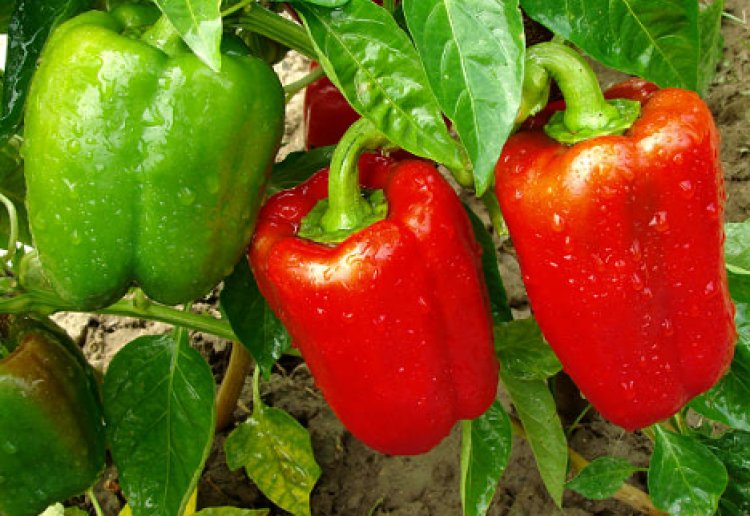How to Grow Capsicums from Seeds in Pots
Bell peppers are another name for capsicums. The cheapest way to obtain a plentiful supply of fresh, juicy bell peppers for meal preparation is by far to grow your own capsicums from seeds.

As capsicums start to ripen, they change color and come in various sizes. All capsicums start out green before ripening further to become red, orange, yellow, or a purple-black color.
Since they require a small amount of space, capsicums are a great addition to a kitchen garden. You will also need a sturdy container, as well as adequate fertilization and mulching, which will make growing chilies or capsicum in pots simple.
Selecting a container
Choose containers that are about 10 to 12 inches deep and very wide before you begin growing bell peppers. Two to three small plants can fit comfortably in this type of container. Make sure there is sufficient drainage capacity as well.
Purchasing bell pepper seeds
Always ensure that the seeds you use to grow capsicums are of high quality. The seeds you buy might grow and germinate well, but the plant's fruits might not turn out well. Therefore, be sure to purchase the seeds from a dependable source. A germination cup or seed tray is always used to start the seeds, which are then transplanted to the desired container.

Choosing a location
Capsicum plants require a lot of sunlight. You must keep the pot in a sunny location if you are growing them in pots. The plant needs 6 to 7 hours per day of direct sunlight. These plants typically grow well, and you will undoubtedly receive a plentiful harvest. But make sure that it is shielded from strong winds.
Soil
When it comes to growing capsicum in pots, soil is crucial. A quality potting mix is essential. It must be top-notch, extremely fertile, and well-drained. Make sure to check the quality of the potting mix before purchasing it from a vendor, or consider taking the time to make your own potting mix.
Caring for capsicums
If you take the time to take care of your pepper plant, the outcome will be fantastic.
Watering the plants - Capsicums require a lot of water but do not overwater them. Never allow the soil to dry out; it should always be moist.
Mulching - Mulching the plants is a good practice that will address the issue of soil water evaporation. Cover the plant's base with any mulching materials you can find, such as paper, straws, or dry leaves.
Fertilizing the soil - Capsicums require high-quality fertilizers, just like other plants do. However, if you apply a lot of nitrogen-rich fertilizer, it will only promote the growth of the foliage so be sure to use it sparingly.
Harvesting capsicums

You can easily harvest bell peppers when they get to the right size. Capsicums can typically be harvested in between 60 and 90 days. Since freshly harvested capsicums have the best flavor in food, it is always a good idea to harvest them when they are still green. They will mature and turn yellow, red, or orange if left unattended.
Tips for growing bell peppers
The three essentials for a successful start are a container, seeds, and high-quality potting soil.
Give your plants the attention they require and harvest them when they are ready.
Giving the plant enough support is always a good idea once the fruits have begun to develop on the plant. You can use bamboo sticks to support the pepper plant.
Although pruning is not required for capsicum, it is always a good idea to pinch the plant's growing tips as this encourages bushier growth.
Although bell pepper plants can reproduce on their own, you can ensure a plentiful crop by shaking the plant when it is in the flowering stage.
Select a tray pot and check that it has plenty of holes so that water can drain away freely and collect any moisture that is present on the storage tray.
Plant the seeds at a depth of 2 inches and a temperature of 20 to 25 °C. The seeds require 3-4 dayd to germinate.




![Uproar as Caroline Kangogo`s Challenge Storms Internet {PHOTOS]](https://www.brightkenyanews.com/uploads/images/2021/07/image_380x226_60f54247c60ee.jpg)






















